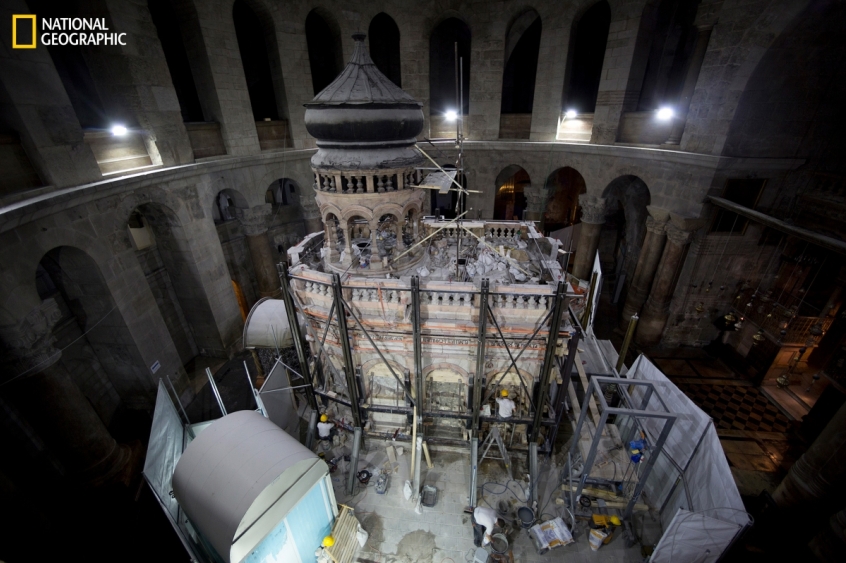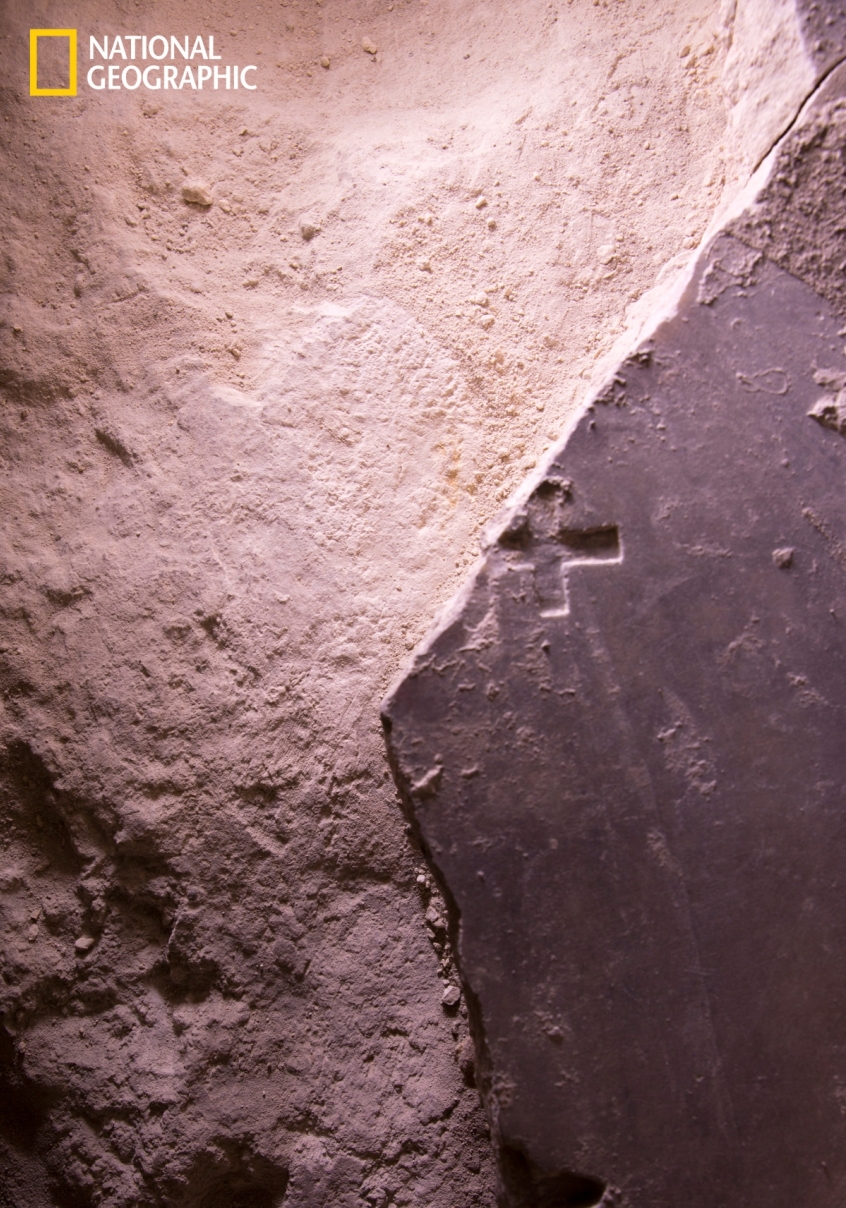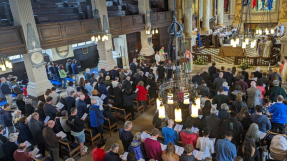
Preliminary findings by researchers investigating the site where Jesus is believed to have been buried appear to confirm that portions of the original tomb are still present today, the National Geographic has reported.
Researchers are continuing their inspection of the tomb, which lies in the middle of the Church of the Holy Sepulchre in Jerusalem's Old City.
Last week, the stone shelf which has for years been encased in marble was uncovered for the first time in centuries.
The tomb today consists of a limestone shelf or burial bed which, since at least 1555, has been covered in marble cladding, thought to prevent pilgrims from removing bits of the original rock.
The marble was removed last week, and a conservation team from the National Technical University of Athens initially found only a layer of fill material underneath.
But during an inspection lasting 60 hours non-stop, a separate marble slab with a cross carved into its surface was exposed. "By the night of October 28, just hours before the tomb was to be resealed, the original limestone burial bed was revealed intact," the National Geographic reported.

"I'm absolutely amazed. My knees are shaking a little bit because I wasn't expecting this," said Fredrik Hiebert, National Geographic's archaeologist-in-residence. "We can't say 100 per cent, but it appears to be visible proof that the location of the tomb has not shifted through time, something that scientists and historians have wondered for decades."
The shrine at the heart of the complex called the Aedicule, the supposed location of the tomb of Jesus, is being renovated at a cost of $3.4 million and the monument, which in its present form dates back to 1810, is being completely rebuilt. The restoration is expected to be finished in 2017.
The renovations will see the marble slabs taken off, the 12th century Crusader shrine beneath the Aedicule repaired and the cracks in the rock-hewn tomb under that filled. The noisy work is being undertaken at night to minimise the disruption to pilgrims.
Researchers confirmed the existence of the original limestone cave walls within the 18th-century Aedicule.
"This is the Holy Rock that has been revered for centuries, but only now can actually be seen," said Chief Scientific Supervisor Professor Antonia Moropoulou, who is directing the conservation and restoration of the Aedicule.
The Church of the Holy Sepulchre was identified as the site of Jesus's crucifixion and burial by representatives of the Roman emperor Constantine, in AD 326.
The church is visited by hundreds of thousands of pilgrims every year and its ownership and maintenance is shared in a complex arrangement between the Armenian, Greek Orthodox and Catholic Churches.
It is currently undergoing restoration work after being damaged by many years of exposure to humidity from the condensation from the breath of visitors, and thermal stress caused by candles burning for hours nearby.













